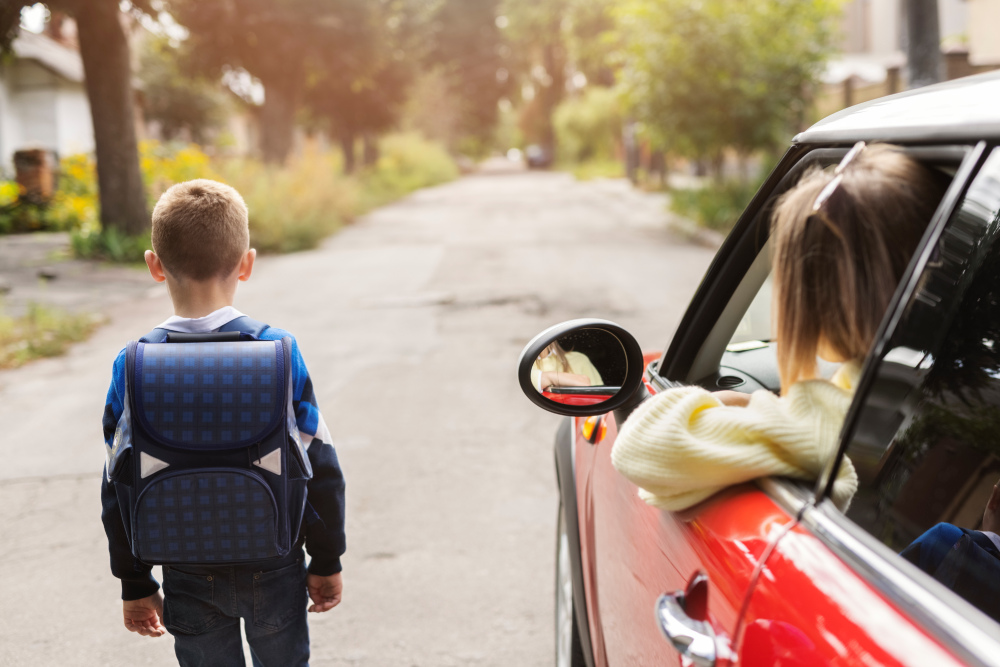Parking Safety for Kids: How to Child-Proof a Driveway

Children are often small and hard to see when near cars. They may not understand the danger and can run into driveways without warning. Accidents involving reversing vehicles are sadly common. Most of these can be prevented with better safety steps. To take action, it helps first to understand what can go wrong on a driveway.
What Accidents Can Happen to Children on Driveways?
Many accidents happen when drivers do not see a child behind or beside the car. Children can trip, fall, or play too close to moving vehicles. A driveway may also lead onto a road, which adds more risk. Slippery surfaces or steep slopes can make things worse. One of the simplest ways to reduce these dangers is through everyday safety habits.
What Daily Practices Reduce the Risk of Driveway Accidents?
Always check behind and around the car before moving it. Hold your child's hand near parked vehicles; do not let them play there. Keep toys and sports equipment away from the driveway. Park in reverse so you drive forward when leaving. Whether using a shared space at home or parking with services like ParkingPreston, small daily habits make a big difference.
How Can You Teach Children About Parking Area Safety?
Start by showing children where it is safe to walk and play. Use simple words and repeat the rules often. Explain that driveways are not places to play. Use role-play or games to help them learn. Once children understand the risks, it's time to look at the layout of the driveway itself.
How Can You Make a Driveway Safer for Kids?
Clear markings and safe zones help guide children away from danger. Bright paint or bollards can show where not to walk. Barriers should be used to block access when the area is not in use. Make sure paths are smooth and not slippery. For extra protection, many families choose to install fences or gates.
Should You Add a Fence, Gate, or Physical Barrier?
Yes, barriers help stop children from running into the driveway. A gate or fence should be strong and easy for adults to open. Place them where children can wander close to moving cars. Consider adding a lock or latch out of a child's reach. Alongside these barriers, technology can also play an important role in keeping kids safe.
Can Driveway Sensors and Cameras Improve Safety?
Sensors can warn you if someone is behind the car. Rear cameras help drivers see blind spots more clearly. These tools are useful, especially with large cars or vans. Many modern systems beep or show alerts when a person is nearby. Choosing the right tech helps to know what alert devices are available.
What Are the Best Devices to Alert You to Movement?
You can install motion lights or alarms that react to movement in the driveway. Some home security systems show live footage on your phone. Pressure pads can alert you when someone steps into the area. These devices are easy to find and often simple to install. But even with tech, shared or busy driveways still need extra care.
How Can You Improve Safety on Shared or Busy Driveways?
Talk to neighbors about ways to improve shared driveway safety. Agree on rules like where children can play and when vehicles move. Marking parking areas can help avoid confusion. Use signs or cones to show when the driveway is in use. If you travel and visit Chester often with family, consider applying the same safety steps when parking in busy residential areas.
What Are the UK's Legal and Safety Standards for Driveways?
There are no strict UK laws for child safety on driveways, but guidance exists. Driveways must allow clear views of the road and paths. Planning rules cover surface types, water drainage, and access. Some councils offer advice or leaflets on driveway safety. Following this guidance adds another layer of protection for your family.
What's the Best Way to Keep Children Safe Around Parked Vehicles?
Use a mix of safe habits, good design, and clear rules. Add barriers, cameras, and warning systems where needed. Teach children how to behave near cars and set firm boundaries. Work with neighbors if space is shared. These steps all come together to make your driveway safer for everyone.